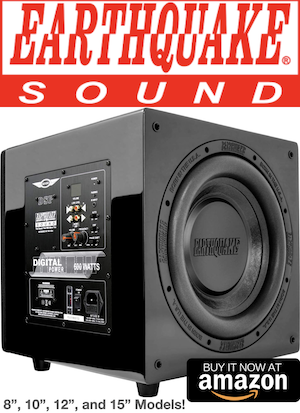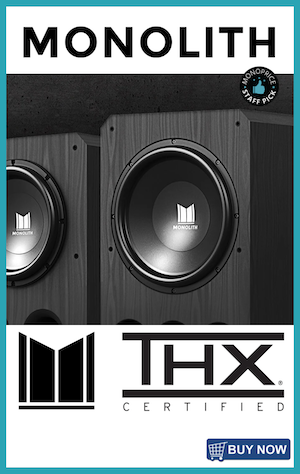Just got a new HSU VTF-15 mk2 for Christmas. My mains are deftech bp-2000's with the low bars off, set as small and hooked to the sub outs of my AVR. I was thinking , not knowing, about putting the low bars back in, removing the rca/lfe and using the speaker's sub controls to control the 2000's subs instead of the AVR. Then the HSU would be controlled by the AVR by itself. Would I then set the mains to large? Do I just leave as is and add the HSU? Dial down the main's subs? How would you guys run the deftechs and HSU in this situation? Small room, mostly music, LOUD, some movies.
-
AUDIO VIDEO PROCESSING, SETUP & ENVIRONMENTOfficial REW (Room EQ Wizard) Support Forum Audiolense User Forum Calibration Equipment Auto-EQ Platforms / Immersive Audio Codecs Video Display Technologies / Calibration AV System Setup and Support Listening Room / Home Theater Build Projects Room Acoustics and Treatments AV Showcase Movies / Music / TV / Streaming
-
AUDIO VIDEO DISCUSSION / EQUIPMENTHome Theater / Audio and Video - Misc Topics Essence For Hi Res Audio AV Equipment Advice and Pricing Awesome Deals and Budget AV Equipment AV Receivers / Processors / Amps UHD / Blu-ray / CD Players / Streaming Devices Two Channel Hi-Fi Equipment DIY Audio Projects Computer Systems - HTPC / Gaming HD and UHD Flat Screen Displays Projectors and Projection Screens AV Accessories Buy - Sell - Trade
Navigation
Install the app
How to install the app on iOS
Follow along with the video below to see how to install our site as a web app on your home screen.
Note: This feature may not be available in some browsers.
More options
You are using an out of date browser. It may not display this or other websites correctly.
You should upgrade or use an alternative browser.
You should upgrade or use an alternative browser.
New HSU
- Thread starter Chazman
- Start date
Wayne A. Pflughaupt
Moderator
More
- Preamp, Processor or Receiver
- Yamaha CX-A5000 A/V Preamp / Processor
- Main Amp
- Yamaha RX-Z9 AV Receiver (as multichannel amp)
- Universal / Blu-ray / CD Player
- Denon DCT-3313 UDCI Universal Disc Player
- Streaming Equipment
- Roku Express
- Front Speakers
- Canton Karat 920
- Front Wide Speakers
- Realistic Minimus 7 (front EFX speakers)
- Center Channel Speaker
- Canton Karat 920
- Surround Speakers
- Canton Plus D
- Surround Back Speakers
- Yamaha YDP2006 Digital Parametric EQ (front mains)
- Front Height Speakers
- Yamaha YDP2006 Digital Parametric EQ (surrounds)
- Rear Height Speakers
- Yamaha YDP2006 Digital Parametric EQ (sub)
- Subwoofers
- Hsu ULS-15 MKII
- Other Speakers
- Adcom ACE-515 (for power management)
- Screen
- Pioneer PDP-6010FD 60" Plasma TV
- Video Display Device
- Yamaha DT-2 (digital clock display)
- Remote Control
- Stock Yamaha Remote
- Other Equipment
- Audio Control R130 Real Time Analyzer
Have no idea what low bars are, but it shouldn’t matter if the Deftech speakers controls their sub or if you have it controlled by the receiver, because once their levels are set, they're set.
You can do this a couple of ways. Run the speakers full-range with the subs, and dial down the Hsu’s frequency knob so that the sub rolls in where the Deftechs subs roll out.
Or, you can run a conventional mains / sub set-up with the Deftechs to “small.”
Worst option would be to run the Deftech full-range and Hsu sub all together. I have no faith that the Deftech subs will dig down to 16 Hz like the Hsu does. Anytime you mismatch subs, you end up with the entire system being “dumbed down” to the level of the weaker sub. You can see an example of that here, complete with supporting graphs.
Regards,
Wayne
You can do this a couple of ways. Run the speakers full-range with the subs, and dial down the Hsu’s frequency knob so that the sub rolls in where the Deftechs subs roll out.
Or, you can run a conventional mains / sub set-up with the Deftechs to “small.”
Worst option would be to run the Deftech full-range and Hsu sub all together. I have no faith that the Deftech subs will dig down to 16 Hz like the Hsu does. Anytime you mismatch subs, you end up with the entire system being “dumbed down” to the level of the weaker sub. You can see an example of that here, complete with supporting graphs.
Regards,
Wayne
Last edited:
The low bars are just another term for jumpers, factory jumpers from high to mid, mid to low. I have (had) the low jumpers off and the subs connected with the lfe/rca jack, speakers set at small. For the most part I've done what you've recommended, and many others. I put the low jumper back in, removed the sub input cables and am running them full range/ large. It sounds incredible with music, but I have had no time to tune everything and figure out what's best for movies also. Thanks for your input!Have no idea what low bars are, but it shouldn’t matter if the Deftech speakers controls their sub or if you have it controlled by the receiver, because once their levels are set, they're set.
You can do this a couple of ways. Run the speakers full-range with the subs, and dial down the Hsu’s frequency knob so that the sub rolls in where the Deftechs’ subs roll out.
Or, you can run a conventional mains / sub set-up with the Deftechs to “small.”
Worst option would be to run the Deftech full-range and Hsu sub all together. I have no faith that the Deftech subs will dig down to 16 Hz alike the Hsu does. Anytime you mismatch subs, you end up with the entire system being “dumbed down” to the level of the weaker sub. You can see an example of that here, complete with supporting graphs.
Regards,
Wayne
Matthew J Poes
AV Addict
- Joined
- Oct 18, 2017
- Posts
- 1,905
Your mains have pretty serious subs built into them. The ideal scenario would have as many LF sources operating simultaneously as possible. This provides the smoothest bass and and most headroom. However modern bass management is not great for this and not all receivers allow this to be done right. You need to be able to run the mains full range and the sub at the same time. Onkyo calls it double bass.
Doing this makes measurements more important. Simultaneous sources can interfere with each other. You want them to integrate smoothly and to overlap each other without causing any unusual boosts or cancelations.
Doing this makes measurements more important. Simultaneous sources can interfere with each other. You want them to integrate smoothly and to overlap each other without causing any unusual boosts or cancelations.
I have done it just as you have recommended. Now I'm buying a umik-1 and going to try and learn about REW. I read somewhere that I should get it from cross-spectrum because the have a better calibration file?is it really worth the more $$ they charge compared to say parts express? Might need to post this in another threadYour mains have pretty serious subs built into them. The ideal scenario would have as many LF sources operating simultaneously as possible. This provides the smoothest bass and and most headroom. However modern bass management is not great for this and not all receivers allow this to be done right. You need to be able to run the mains full range and the sub at the same time. Onkyo calls it double bass.
Doing this makes measurements more important. Simultaneous sources can interfere with each other. You want them to integrate smoothly and to overlap each other without causing any unusual boosts or cancelations.
Matthew J Poes
AV Addict
- Joined
- Oct 18, 2017
- Posts
- 1,905
I have done it just as you have recommended. Now I'm buying a umik-1 and going to try and learn about REW. I read somewhere that I should get it from cross-spectrum because the have a better calibration file?is it really worth the more $$ they charge compared to say parts express? Might need to post this in another thread
When you are ready to start this start a new thread to discuss. Briefly, the crosspsectrum calibration is handy but not absolutely necessary. The difference in mics at lf’s is Very small. Even cheap mics are fairly accurate at low frequencies. Some people like the calibration because it extends the response to well below 20hz more accurately. For calibration purposes this would only matter if you intend to use eq to extend the response that low. I personally recommend against that when using most commercial subs as they typically have high pass filters and probably would not handle the eq well. Commercial subs with substantial subsonic output are designed and eqed to their limit already and are best left alone. That means that for most people the better calibration file is more for peace of mind and not better eq of the system.
Given the small price difference many people find it no big deal to buy the CS version of the mic. I bought it because I use mine for full frequency response calibration with software like DIRAC and for speaker design work. I also was curious how closely it would track my better mics.
Popular tags
20th century fox
4k blu-ray
4k uhd
4k ultrahd
action
adventure
animated
animation
bass
blu-ray
calibration
comedy
comics
denon
dirac
dirac live
disney
dolby atmos
drama
fantasy
hdmi 2.1
home theater
horror
kaleidescape
klipsch
lionsgate
marantz
movies
onkyo
paramount
pioneer
rew
romance
sci-fi
scream factory
shout factory
sony
stormaudio
subwoofer
svs
terror
thriller
uhd
ultrahd
ultrahd 4k
universal
value electronics
warner
warner brothers
well go usa












